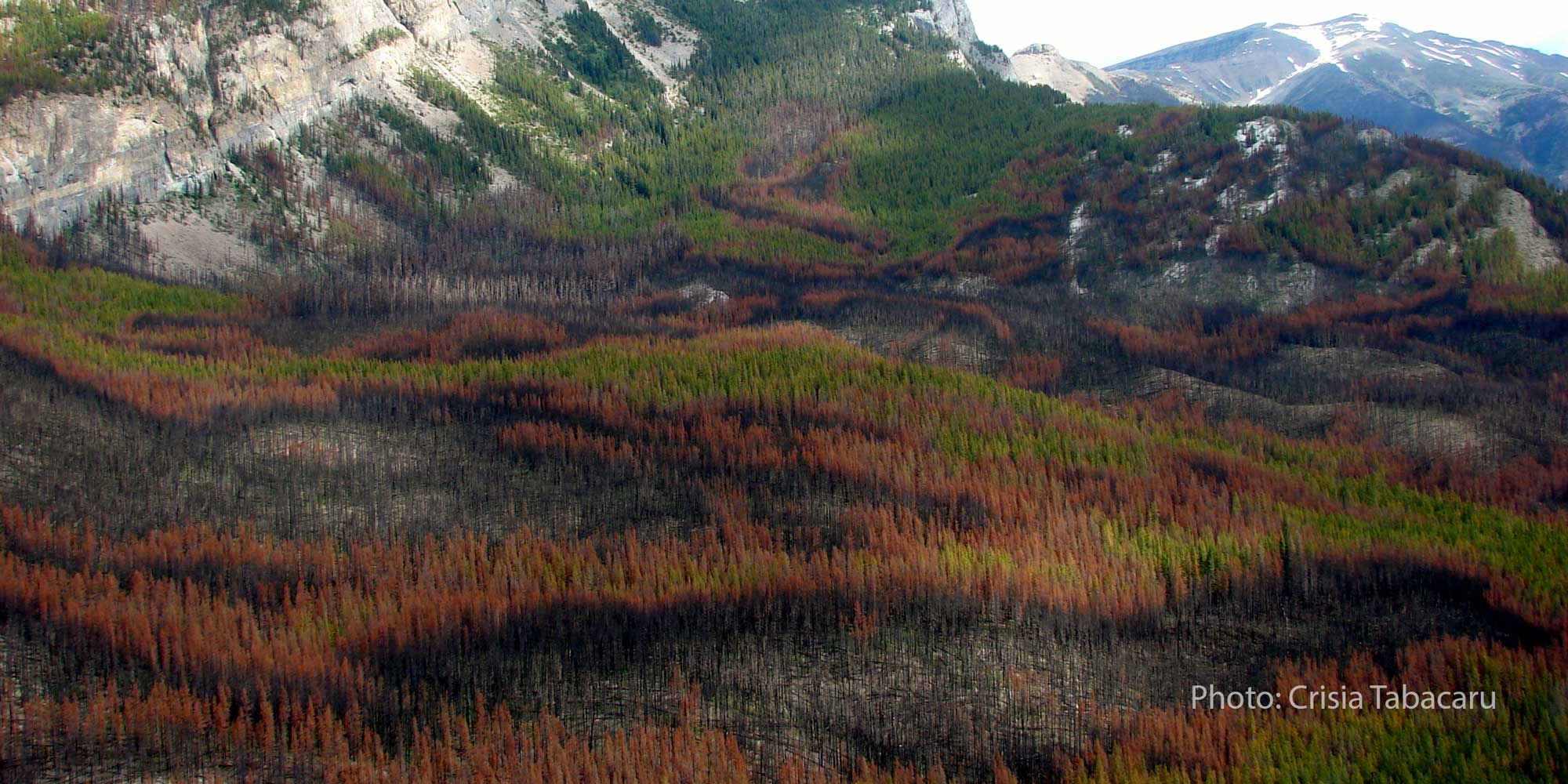
Simulating MPB Spread Management in Alberta and Beyond Using SpaDES
What drives dispersal, establishment, and population dynamics of MPB in novel host environments?
Robust forecasts of MPB eruptive potential and spread are required to identify regions for targeted management actions in order to slow the spread of this tree-killing forest pest. We developed and validated a spatially explicit MPB forecasting model that couples an existing (aspatial) population growth model with a long range dispersal and climatic suitability models for a study area in central Alberta, Canada.
Our model showed very good to excellent predictive ability over a 10-year forecast horizon, based on Area Under the Curve scores. We forecast MPB eruptive dynamics and dispersal for the current decade (2021-2030), and predict modest range expansions northward and eastwards. Our spatial forecasts identify areas at greatest risk of MPB infestation this decade, and therefore identifies areas that could be targeted by management actions before these populations grow out of control.
A key benefit of the modelling system we used is modularity and reusability of model components, which facilitates application of the model to new study areas. Additional integration of this model with climate change, wildfires, species-at-risk, and management models may be used to address complex land management challenges beyond the short terms here.
Key Questions
What drives local and long distance beetle dispersal, establishment and population dynamics of MPB in novel host environments?
Aspatial modeling results from Cooke & Carroll suggest that the most critical factors affecting invasive dynamics are positive feedback processes occurring at low density, including dispersal, host-finding, congregative host mass-attack, and egg and early larval survival. We propose to spatialize this model of MPB nonlinear dynamics, by including two key components: a dispersal component, and spatial variation in validated models of climatic suitability.
What critical establishment thresholds can be defined to guide operational management of MPB infestations in novel habitats?
Simulating MPB eruptive dynamics requires a set of host forest dynamics equations that allows for the existence and evolution of separate endemic and epidemic host tree niches, defined as distinct forest age and health classes that support endemic and epidemic populations of MPB. Simulating stand development over time, with the natural emergence of endemic niches through the self-thinning process and stochastic perturbations (e.g., through fires or lighting strikes), SpaDES has this capability.
The most critical threshold influencing eruptive dynamics is the point at which populations in the endemic niche are willing and able to successfully mass attack trees in the epidemic niche. This point is defined by the intersection between the endemic and epidemic niche recruitment curves. The key problem in MPB ecology is how changing environmental conditions (e.g., climate warming and water stress) tends to shift and bend these recruitment curves, allowing endemic populations subsisting on suppressed trees to suddenly access the epidemic niche comprised of healthy, vigorous trees.
As an Open Source platform implemented in R, SpaDES is freely available, and the MPB module code is also accessible to all. spades.predictiveecology.org/












